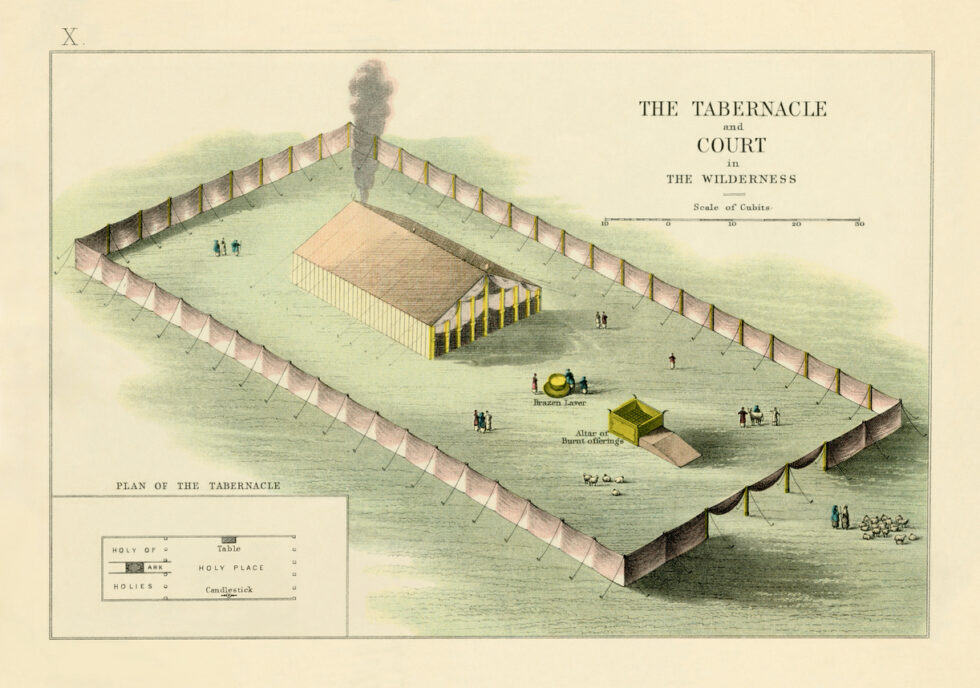One person’s annoying details are another person’s sacred instructions. The question is almost never who is right about which it is, but how it works for both parties, and what can be gleaned from each of their experiences. Nowhere is that clearer than in this week’s Torah reading, Parashat Terumah.
Ninety-three verses relate the details of the building materials and sizes that will comprise the Tabernacle that will stand at the center of the Israelites’ encampment, and unless you love reading Home Depot shopping lists, there is not a lot there for most readers. Even those of us who want to connect to this reading because it is Torah and it is ours may have to reach. Unless they look at the two verses of this parashah that are anything but a shopping list. In fact, these two verses can point us to how any set of annoying details can become deeply meaningful and genuinely holy.
Exodus 25:2, the second verse of the reading, says:
“Speak to the Israelites and have them take a contribution for Me, from each person according to that which their heart moves them to give Me.”
While the Torah is filled with obligations, including financial ones such as the Half Shekel tax required to sustain the Tabernacle once it is built, and tithes which are meant to sustain the Priests, the Levites, and the poor, the building of the Tabernacle is is built exclusively from that which people’s hearts freely offer!
What if the first key to understanding how an annoying detail becomes a sacred practice is the appreciation of that which is freely offered? Of course, obligations and institutions are necessary components of all successful cultures, communities, and relationships. Without them, nothing can be sustained and grown. But the foundation, at least as seen in Parashat Terumah, must be that which is freely offered. That freedom, it seems, is the bedrock upon which subsequent obligations and institutions are built.
In this single verse that frames the “shopping” list comprising almost the entirety of this Torah reading, we are invited to imagine that when we truly listen to our hearts, we find how that listening can motivate us to greater generosity, freely offered. Then, what might otherwise be niggling details become sacred opportunities to participate in something truly life-changing. The context will be different for each of us, but that insight can travel with us always and anywhere — from the construction of ancient tabernacles to the construction of contemporary communities.
The second, and perhaps even more radical, insight about how all this works is found just a few verses later (25:8), also framing the list: “Let them make Me a sacred place that I may dwell in them.” That I may dwell in “them”: the people, not in the building they have built!
As we enter the weediest of the weeds–all of the detailed instructions, the monumental work, and the “worst” and most boring of the details — not to mention other biblical sources pointing to the building being for God, we are reminded here that all of these details are ultimately about us. This entire shopping list, we are told, is not about the building but about us, and about giving us a sense that the Holy lies within us, at least as much as anywhere else.
Yes, the Tabernacle must be built. However, it is precisely because it is a means to an end and not an end in and of itself that its details can be exciting and life-giving, not boring and deadening. The Tabernacle, like all vital institutions, must point beyond itself, to something even greater, no matter how great it may be. In this case, the greater thing is us — our capacity to be the ultimate dwelling place of God and goodness.
Again, it takes details and effort and all sorts of “stuff” to make it happen, but they are not the end of the story. We are. We and what we do with the details of our lives, such that we can feel and others can see that we are the place where the best things dwell and grow. Where whatever each of us may mean by God, including the God in whom some of us don’t believe, is within us, as we are promised this week and evermore.
And that is how one person’s boring shopping list becomes another person’s sacred opportunity.

Listed for many years in Newsweek as one of America’s “50 Most Influential Rabbis” and recognized as one of our nation’s leading “Preachers and Teachers,” by Beliefnet.com, Rabbi Brad Hirschfield serves as the President of Clal–The National Jewish Center for Learning and Leadership, a training institute, think tank, and resource center nurturing religious and intellectual pluralism within the Jewish community, and the wider world, preparing people to meet the biggest challenges we face in our increasingly polarized world.
An ordained Orthodox rabbi who studied for his PhD and taught at The Jewish Theological Seminary, he has also taught the University of Pennsylvania, where he directs an ongoing seminar, and American Jewish University. Rabbi Brad regularly teaches and consults for the US Army and United States Department of Defense, religious organizations — Jewish and Christian — including United Seminary (Methodist), Yeshivat Chovevei Torah (Modern Orthodox) Luther Seminary (Lutheran), and The Jewish Theological Seminary (Conservative) — civic organizations including No Labels, Odyssey Impact, and The Aspen Institute, numerous Jewish Federations, and a variety of communal and family foundations.
Hirschfield is the author and editor of numerous books, including You Don’t Have To Be Wrong For Me To Be Right: Finding Faith Without Fanaticism, writes a column for Religion News Service, and appears regularly on TV and radio in outlets ranging from The Washington Post to Fox News Channel. He is also the founder of the Stand and See Fellowship, which brings hundreds of Christian religious leaders to Israel, preparing them to address the increasing polarization around Middle East issues — and really all currently polarizing issues at home and abroad — with six words, “It’s more complicated than we know.”

